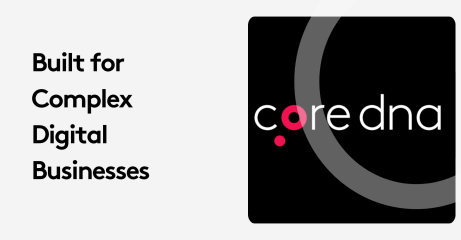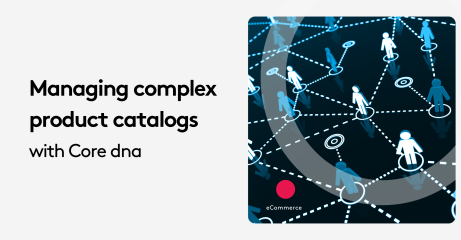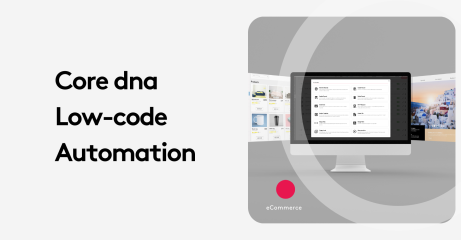eCommerce Marketing Essentials: Funnel Hacks, Reviews, Influencer Power & More

On this page:
Introduction
The marketing world can feel like a formula 1 race track at times. Everything seems to be moving at breakneck speed and things are always changing. There’s a constant barrage of new strategies and tactics like content marketing, email marketing, SEO, link building and viral marketing.
Each one requiring a complex set of skills to wield effectively. Making it easy for any store owner to feel like he’s sinking in an ocean of information, with 100lb concrete blocks cemented to his feet.
But regardless of the market you’re in - and no matter how much people’s tastes change, or how many new strategies and tactics are released, the goal is the same...
To keep customers pouring into your eCommerce funnel.
So listed below are the essentials of effective eCommerce marketing that fill your funnel.
Start with accurate analytics
You can’t fix gaps in your marketing if you don’t know where the “holes” are.
Identifying weaknesses starts with Analytics. If you have several months worth of data, you can begin to draw some conclusions about how visitors are interacting with your content and/or product.
Here’s an example from the Google analytics menu after clicking the “Conversions” section. Then, selecting “Goals” and “Funnel Visualization.”
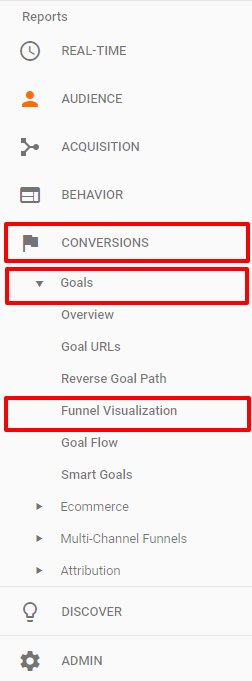
Here you will see a visualized 3-step conversion funnel:
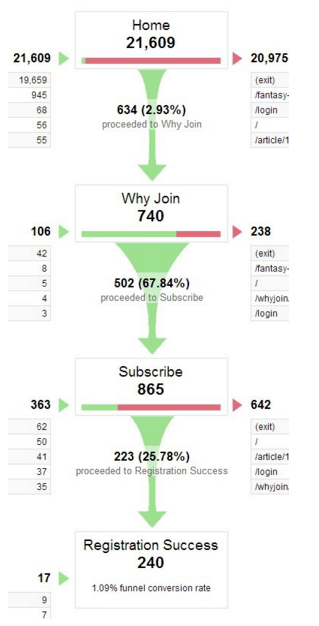
This funnel above is leaking heavily at all stages. So it's clear that there’s room for improvement.
But if this was your eCommerce store, where would you start?
For the best ROI, address the biggest weaknesses first. In this case, the correct answer is the homepage. As only 2.93% of people proceeded to “Why Join”.
When identifying your leaks, consider the following points:
- Start with your biggest, costliest weak links and high traffic pages. Use Google Analytics reports to help you with this.
- Run tests for at least a month.
- Never stop monitoring results and testing. You can always improve.
Analytics provide you with data-driven facts to understand your visitors, crank up conversions, and exponentially improve all your marketing efforts. As well as looking at specific pages, you’re also going to need to use analytics to dig out the following:
1. Which channels are driving traffic and sales
This helps prioritize efforts for the highest ROI channels
2. Which websites are linking to you and the volume of traffic they're driving
Enhances knowledge of your customers and gives insight into highest quantity/quality traffic sources
3. Which products sell better
A great aid in segmenting different products for different customers and personalizing for higher conversions and better customer experience
4. Which funnel/step has the most “drop-offs”
Fixing one or two primary weak links results in huge potential gains.
Quick tip: Implement an analytics health checklist Don’t drown your conversions and ruin analytics with inaccurate information. For clean, accurate data create - or use - a Google Analytics Health checklist to review and optimize your setup.
Recommended analytics tools:
- Heap: Codeless analytics and automated data insights for every online business
- Mixpanel: Product analytics for mobile, web, and beyond
- TruConversion: Find out why your website visitors are leaving
- Segment: Analytics API and customer data platform
- Google Analytics: Freemium web analytics service offered by Google that tracks and reports website traffic
- Hotjar: Heatmaps, visitor recordings, conversion funnels, form analytics, feedback polls and surveys in one platform
- Kissmetrics: Behavioral analytics and engagement platform
Engage and profit with email marketing
“The money’s in the list”.
It’s struck your eardrums for the hundredth time right now, but this platitude is only half-true. A substantial email list isn’t enough; how you nurture and interact with your list - that’s the linchpin for successful email marketing. Spamming subscribers with sales messages is as equally effective as cold-calling people and yelling at them to “buy stuff!”
To squeeze the most returns from their email lists, eCommerce stores and online retailers need to segment, target, and follow up leads at various interest levels.
In other words, you need a solid sales funnel.
Now, a sales funnel can be as complicated and intricate as you want it to be. But here’s a simple rundown of the 3 main stages where leads circulate your eCommerce funnel:
Stage 1: Interested
The early acquisition stage. Where your lead has signed up for a coupon, guide, bonus etc. but hasn’t purchased anything yet. The primary goal of stage 1? Get the customer to sign up.
Stage 2: Engaged
After the initial purchase/purchases, your lead is now at stage 2, they’re engaged. The goal of stage 2? Repeat customers; aiming for higher sales volume per customer. This is where segmenting, promotions, and triggered emails begin to reap revenue-boosting rewards.
Your job doesn't end when your visitors turned into paid customers. One email you should be sending to paid customers is a transactional email. It's crucial for eCommerce marketers to leverage the marketing potential of transactional emails by including content about special promotions, loyalty programs, or general branding such as links to your social media pages.
A lot of marketers make the mistake of sending generic transactional emails, such as simply including the purchase information and call it a day. This would be a big waste as transactional emails tend to have much higher open and engagement rates than other promotional campaigns (yes, even when you use solid segmentations in those campaigns).
Stage 3: Lapsed
If leads aren’t opening emails, and are unresponsive - they’ve lapsed. The goal of stage 3 is to reactivate lapsed leads into buying. Either through a tailored series of abandonment emails, special offers, or simple satisfaction emails (all built-in with Core dna) intended to rekindle their interest.
Actionable takeaway: To ensure that you’re on the right track, map the funnel out. List the stages where leads in your funnel become “interested”, “engaged” and “lapsed”; detailing the content, ads, or messages they’ll encounter at each step/stage. This gives you a
Recommended email marketing tools:
- MailChimp (integrated in Core dna): Email marketing automation for eCommerce businesses
- Campaign Monitor (integrated in Core dna): Professional-grade email marketing and automation
- Active Campaign: Integrated email marketing, marketing automation, and small business CRM
- Emma: Digital marketing platform to plan design, and optimized targeted email campaigns
- SendX: 360-degree email marketing automation
- Klaviyo: Email marketing tool built for eCommerce and web businesses
Wow customers with user reviews
Your friends drag you out for a Saturday night meal in town, you’re choosing where to eat. “Chinese” is what you’ve decided on. So stomach rumbling, you scan the sea of surrounding restaurants; the waft of mouthwatering food turning that rumble into a growl. There!
Two Chinese restaurants (side-by-side for some odd reason) catch your eye, but you notice something strange:
- Apart from a server expectantly gazing out the store, the left restaurant is still. Its empty chairs neatly tucked under vacant tables topped with perfectly arranged cutlery.
- The restaurant on the right is bustling with activity. A flock of customers giggle on the way out; the cheery clang of plates following them as the door swings shut.
Which restaurant wins your trust?
The right one, obviously.
Without user reviews on your eCommerce store, you are that deserted restaurant on a bustling day in a busy part of town. Your lack of social proof is in itself, negative social proof. And negative social proof crumbles your credibility and pushes potential customers away from your store.

(Online reviews affect their buying decision tremendously | Image source)
Because even though they come from complete strangers, online reviews garner a lot of trusts. 84% of people trust online reviews as much as personal recommendations. And 61% of customers read online reviews before buying. So, how do you attract a high quality and number of reviews that cement your eCommerce store’s credibility?
1. Send out friendly emails
Customers aren’t going to beat a path to your door to leave reviews. Making an effort to collect them is the first step to ramping up your social proof and credibility. But when’s the right time to ask?
After your customer has explored your product enough to benefit from it.
Set an email campaign to trigger 1-2 weeks after purchase. A simple “give me a review” type email won’t suffice. Explain how you value their custom, be gentle, and ask how you can serve them better.
2. Make it easy to leave a review
Do you really need your customer's location? Gender? Age?
These filters may be relevant to your review - most likely not. But, it’s a proven fact, the fewer details people have to fill in, the higher the chance of them actually filling details in. Want to collect a wall of sparkling testimonials and reviews?
Keep the reviewing process simple, customer oriented, and pain-free.
3. Give customers an incentive
Despite spending very little on advertising, Dropbox is worth billions.
They make it really easy for users to tell one another about the product; even giving them incentives. For example, when one person who has Dropbox refers another, they both get a 500MB increase, pending signup. This type of referral system increased Dropbox signups by 60%. And it teaches an important lesson when asking people to leave reviews:
Rewards and incentives are powerful tools for motivating action. Asking for reviews might get you a few responses, but asking for reviews with a gift that’s got your reviewer’s name on it will soar your response rate.
For more authentic and credible reviews, focus on post-purchase - or multiple purchases - incentives. This ensures that you’re not getting reviews for freebies or competition entries. And it removes the suspicion of you crossing the “borderline bribing people” line.
Key takeaway: Offering either a steep discount or free valuable gift to the winner, create a sweepstake to motivate customers to leave you a review. It’s easy to implement and lead to an avalanche of credibility-boosting reviews.
Recommended user review tools:
- Feefo: Collect real reviews and customer insights to boost business and build trust
- Yotpo: All-in-one UGC marketing platform collects and syndicates every type of customer content (reviews, Q&A, photos and more) to increase trust, social proof and sales
- Bazaarvoice: User-generated content marketing solutions
- Trustpilot: Get the real inside story from shoppers. Read, write and share reviews
- Revoo: Talk with, listen to and learn from their customers with reviews, feedback & user-generated content
Cut through noise with content marketing
Consumers don’t even blink at traditional advertising anymore.
They’ll skip YouTube ads, ignore banners online, and trash irrelevant emails.
Research shows that:
- Content marketing costs 62% less than traditional marketing and generates about 3 times as many leads.
- Conversion rates are nearly 6x higher for content marketing adopters than non-adopters (2.9% vs 0.5%).
- In 2014, 57% of marketers reported custom content was their top marketing priority.
Content marketing allows you to combine two essential pieces of the modern marketing puzzle:
- Providing value through educating
- Selling your product/service
But, blindly churning out content (the default “strategy” deployed by most companies) won’t make a dent in your sales. Educating customers, building credibility, and proving yourself as an expert in your market is what turns curious visitors into satisfied customers.
Easy-to-follow videos, brand storytelling, in-depth guides, and detailed charts establish a sense of expertise. Building trust that’s even more vital when selling high-ticket items online. But content marketing isn’t as simple as slapping together a few posts and slamming the publish button, sharing an assortment of podcast interviews on your Twitter, or even recording a YouTube “tour” of your warehouse (for the 50th time).
That’s a surefire way to shoot your content marketing in the foot.
Benji Hyam - from Grow and Convert, explains how he boosted a client’s traffic by 67% from 1 new post, in just two weeks. His takeaway from this success?
Systemizing the process for researching, creating, and promoting content is key.
According to Benji, businesses suck at content marketing because they fail to harness the power of applying system-level thinking to:
- User research: Resulting in narrowing down to an ideal client type
- Content strategy: Producing a piece that hits on this client type’s pain points in a format they’d find genuinely interesting, fun, or useful
- Content promotion: Promoting it strategically in places where the ideal client type already hangs out.”
An airtight action plan and process will keep traffic, leads, and sales pouring in. Here’s what constitutes that plan:
1. Content goals
What’s your long-term content marketing goal? Backlinks, social shares, followers, subscribers? Identifying key metrics to measure your content marketing performance is an absolute must.
2. Influencer list
You’ll need some help with the heavy lifting. Someone with existing authority who shares your audience. “Influencers” are going to be key in this, so you’ll need a list of them. Whether they’re established A-players or the up-and-coming stars of tomorrow, the ability to stand on the shoulders of these digital giants is game-changing.
3. Buyer persona
Who is your ideal client? Where do they hang out online? What are their interests? Buyer personas help fathom who your typical/ideal customer is, and how you’ll serve them; forming and heavily influencing the content you’ll create. Check out this amazing article by Ardath Albee on the process needed for creating comprehensive buyer personas.
4. Buyer’s journey
Typically the buyer’s journey covers three phases: A problem/pain, an interest in solving that problem, and an arising need that pulls towards taking action. At which point will your customer meet your content? And what purpose will it serve? For example, while browsing social media, a customer might click on a helpful piece of content via paid ads. The content not only teaches the customer how to resolve a pain/problem but asks them to subscribe for access to deeper, gated content they’re prone to enjoy - eventually turning an interested click, into an engaged lead.
5. Content calendar/workflow
If you don’t have a content calendar/workflow, that means you don’t have a content marketing plan. Your content marketing is as good as the system it relies on; maintain a fixed schedule to keep yourself focused and keep your audience engaged.
6. Content distribution (outreach) plan
You can create spellbindingly good content, but it’s rendered useless if it doesn’t land in the right hands. Posting to your own site is easy. But you’ll also need to have a target list of external sites/audiences to reach. This can be achieved through syndication, strategic sharing, influencer outreach, and even paid ads.
To effectively compete and deliver the right content to the right customer at the right time, marketers need more than creating one content marketing asset after another; they need a content operation to transform their entire content strategy into a coherent message.
- Paralee Walls, Director of Digital Marketing & Content Operations, Kapost
- Find your ideal customer type: Who are they? What do they do? And why are they ideal consumers of your product?
- Confirm your content direction: What type of content addresses their pain? List your customer’s top Google searches for the pain they’re trying to solve.
- Scour Facebook groups. With the largest network of groups/people, your ideal customers are most likely socially active on Facebook. Find them, and you’ve got immediate traffic to your content, and potential leads.
Recommended content marketing tools:
- CoSchedule: A complete marketing calendar and social media planning tool
- Trello: Organize anything, together
- Asana: Track your team's work & manage projects
- Kapost: Build and manage a content operation
- GatherContent: Easily organize and produce content for website projects
- Core Teams: Core dna’s end-to-end content flow, calendar, tasks management, and timesheet platform
Use influencer marketing to skyrocket exposure
Ever heard of the pilot fish?
It has an extremely easy way to find food and survive. Simply entering the mouth of a shark, untouched, it feeds on dead skin and ectoparasites. The shark gets cleaned, and the fish gets its food. A win-win situation for both.
To drive more leads to the top of your eCommerce funnel, the same mutually beneficial philosophy is applicable to influencer marketing. Reach out to influencers in your industry whose audience will truly benefit from your product. Then give them a promising offer in exchange for exposure.
Visit any decent sized YouTube gaming channel, and you’ll see their products being promoted/reviewed by big-name YouTubers.
(Unbox Therapy is a big name in the gaming niche)
This allows them to generate brand awareness and boost sales without breaking the bank. Through influencer marketing, they cut through the noise and sit directly in front of ideal customers.
To implement influencer marketing effectively:
- Know the best platform for your audience. Ask yourself “where do people who buy our products hang out?”
- Search for influencers on those platforms with large, active audiences.
- Subscribe to their blogs and channels, interact with their community.
- Ensure your product paints the influencer in a positive light. This only works if your product is a match. Because a large number of people are hanging on their expertise; influencers aren’t going to sacrifice their hard-built reputation for an ill-matching product.
- Make an irrefutable offer. Email the influencer and tell them about your product. Let them test it out. If they like it, their audience will appreciate being introduced to a beneficial product. And if you want to go the extra mile...offer them an incentive for promoting your product. It could be a steep discount just for their audience, or a small commission off each sale etc.
"
As an eCommerce brand, one of the most important things to do is to develop deeper relationships with influencers that drive positive ROI for you. Be creative and come up with unique ways they can continue to drive repeated business to your site.
3 steps to kickstart influencer marketing
Who do you target? How do you reach them? Are they ideal for spreading the word about your product? Finding and persuading influencers can feel overwhelming when starting out. Follow these 3 steps to form a strong, focused start to influencer marketing:
1. Use the right tools to find the right influencers
You need to know which high authority figure's audience overlaps with yours. Fortunately, there are plenty of tools to point you in the right direction. And BuzzSumo is one of the best:
BuzzSumo gives you insight into:
- Which headlines types are popular with your target audience
- Which platforms generate the most shares
- Which Influencers are up-and-comers (by how many followers they have)
- What content structure resonates with your target audience
With metrics on successful topics, thriving social media channels, and key influencers just a few clicks away, identifying influencers - and pitching them your product - can be executed with a high degree of accuracy that yields a solid ROI.
2. Pitch your influencers
Depending on:
- What it is you want them to do,
- The size of their audience,
- The level of engagement.
Paying influencers can be pretty expensive. Prices range between a couple hundred dollars, to hundreds of thousands per post/video/shoutout. Luckily, a popular alternative to paying for engagement is to offer free products for review or provide content.
Now, this probably won’t work with A-level influencers.
Companies constantly bombard the “big boys” with freebies while praying for a positive review. Offering them a percentage of sales or flat rate, however, might pique their interest. B-C level influencers with smaller audiences, on the other hand, will probably respond better to freebies/content in exchange for exposure.
Either way, influencer research is instrumental in laying down an enticing offer on the table.
3. Track ROI and constantly adapt
Traffic rushing in from influencers with beefy social media accounts isn’t enough. You must be able to step back, gather insights based on data, list influencers who generate the highest return, and understand what content resonates with their audience.
Should you offer an in-depth guest post on their blog? Maybe request a review on their YouTube channel? Or perhaps a shoutout on Instagram will drive more business to your eCommerce store?
Each audience responds differently depending on their influencer, content platform, and market. And tracking ROI helps you attack the bigger picture by adapting to each influencer based on hard data.
Recommended influencer marketing tools
- Speakr : The global influencer network exchange providing brand advocacy, talent management, and social publishing at scale.
- AspireIQ (Formerly Revfluence): Comprehensive influencer search engine and powerful influencer relationship management tools to scale your influencer marketing
- Klear: Build, scale and measure influencer programs from the most comprehensive database of over 1 billion influencers
- Iconosquare: The world's largest Instagram search engine
- Reelio: Connects brands with YouTube, Instagram, and Facebook influencers
- BuzzSumo: Identify the most shared links and key influencers
- Famebit: Find, hire, and work with YouTube influencers
- Open Influence: Creative & data-driven influencer marketing services
- Hypetap: A marketplace for brands, agencies, influencers and talent managers
- T R I B E: Fastest growing self-serve marketplace connecting brands with micro-influencers
- TapInfluence: Influencer marketing technology powered by an opt-in marketplace of content creators, influencers, and real-life program data
- Grapevine: YouTube influencer marketing platform
- Shoutcart: Marketplace to buy and sell Instagram shoutouts
- Upfluence:Influencer marketing campaigns and provide content marketing services tailored to your needs
Strengthen branding with social media
75% of consumers buy something after seeing it on social media. When used correctly, eCommerce retailers can harness social media to generate growth, sales, and a loyal audience.
You can have thousands of fans and followers, but your informative, witty posts will be as effective as a cucumber in a knife fight if the users who see them are uninterested or inactive.
Low-quality followers won't share your posts, care about your content, or drive more sales to your eCommerce store. To snatch up followers that actually appreciate your content, interact with your brand, and drive more business, start by:
Being active where both your target audience and competitors hang out
- Creating a community of insiders. Give people a heads up on promotions, special offers, and events. They’ll be more motivated to follow you that way
- Using sweepstakes and giveaways to generate a buzz and attract traffic
Actionable step-by-step takeaways:
1. Create social media marketing objectives and goals
Without goals, you have no means of gauging success. These goals should be aligned with your broader marketing strategy so that your social media efforts drive toward your business objectives.
2. Conduct a social media audit
Figure out who is currently connecting with you via social, and how your social media presence compares to your competitors’.
3. Select social media networks that match your business
Success in anything requires focus; social media is no different. Trying to build a thriving audience on every single platform is futile. Instead, focus on the 3 main networks that are best suited for:
- Your industry
- Your audience
- And the content you share

4. Measure your ROI
According to Altimeter, only 34% of businesses feel that their social strategy is connected to their business outcomes. Without tracking, you’re left with blind decisions, uneducated guesses and no plan of action. So how do you go about measuring ROI from social media?
Tie your social media metrics with your marketing goals.
Start by setting goals for each campaign, then track metrics related to those goals. For example, if your goals are to “raise traffic and sales”, keep an eye on your click-through-rates and conversions from your social media traffic sources.
Finally, create meaningful benchmarks so you can analyze your performance and pave the way for constant improvement.
Recommended social media tools to use:
- Later: Schedule and manage your Instagram posts
- PostmastR: Your on-demand social media manager
- Fastory: The leading mobile-first marketing suite
- Buffer: Schedule posts, track the performance of your content and manage all your accounts in one place
- MeetEdgar: Social media scheduling tool that manages itself
- Sprout Social: Communicate with customers on social channels, collaborate across teams and measure the effectiveness of their efforts
- Hootsuite: Manage multiple networks and profiles and measure your campaign results
- PromoRepublic: An automated platform that helps you create, plan, and promote high-quality content on social media
- BRAND24: Keep track of your brand online
- Storyheap: Manage your Snapchat & Instagram Stories
- Holly Social: Experience the power of unlimited social media automation
Scale with paid ads
Facebook ads, Instagram ads, Twitter ads, Google AdWords, Google Display Ads, Google Product Listing Ads, Pinterest ads, Snapchat Ads… the dizzying array of paid ad platforms available seems to undergo cosmological expansion year by year. And there’s a good reason for that. Research shows that:
- Pay-per-click advertising has been proven to have a positive impact on organic click-through rates.
- “For every $1 a business spends on AdWords, they receive $8 in profit through Google Search and AdWords”(Google report)
Despite reassuring research, for many eCommerce store owners “PPC advertising” still triggers memories of confusing number crunching, negative returns, and a dwindling ad budget that’s eating profits.
Like picking a tough lock, breaking into successful paid ads requires systematic alignment of multiple points. The doors to traffic and sales won’t open with just a great USP, image, or killer ad copy. Sure, those features will win click-through rates and boost landing page traffic. But the page isn’t converting, which means you’ve squandered a hard-earned click.
Ramp up your remarketing strategies
By using remarketing and dynamic remarketing, you can get in front of old leads as they browse other sites or apps.
Remarketing - through Facebook, Google, and Instagram - shows past visitors an ad back to your site, encouraging them to come back. Dynamic remarketing levels up traditional remarketing.
It serves past visitors ads which display the exact/similar products they were looking at on your site. So if a customer purchased a lush red dress from your site, they’ll be offered an ad showcasing the perfect heels to match it, with 15% off.
To remarket effectively:
Remarketing isn’t as simple as throwing out ads that link to your store. You’ll have to track, develop data to work from, and most importantly- repeatedly test and adapt. Below are simple tips to help you with all that:
1. Tag all pages on your website
The more data you have, the more accurate your remarketing efforts
2. Customize your remarketing messages
Segmenting your remarketing can yield high returns, especially if you offer multiple products. You can segment by demographics, shopping cart activity, cart abandonment, purchase history or search behavior.
3. Upsell and cross-sell
Offering similar products is a great way to ramp up your profit per customer.
4. Maintain a balanced frequency
Yes, you want to consistently keep your brand fresh in your customer’s mind. But repeated exposure to the same ad will lead to “burnout”, ultimately turning customers off.
For profitable PPC from the get-go follow the points below:
Fix your funnel
Yes, we’ve talked about sales funnels before, and yes, here they are again. Ads cost money, and if your ads aren’t supported by an air-tight sales funnel, there’s no point running them.
This doesn’t have to be a diabolically detailed pinky-and-the-brain-level funnel. But the basics like - where leads view ads, what searches trigger your ads to be shown, and how to maintain relevance through all stages - need to be covered.
Rely on realistic buyer personas
So what exactly is a customer persona?
Here’s the definition from a leading expert in the field of buyer insights and behavior research, Tony Zambito:
Buyer personas are research-based archetypal (modeled) representations of who buyers are, what they are trying to accomplish, what goals drive their behavior, how they think, how they buy, and why they make buying decisions.
- Tony Zambito
In other words, it’s a fictional model that represents your customers, or group of customers. If you have customers with separate goals and needs, then you’d have a matching customer profile for each segment.
Now they might be fictional representations, but they definitely aren’t derived from fiction. Customer personas are engineered by real, raw, complete data about who your customers are. Not who you think they are. If you want more information on developing accurate personas for your eCommerce store, check out our guide on eCommerce personalization.
Segment your audience to make relevant offers
Clothing retailer Johnny Cupcakes had an email list of 80,000 customers; all of them were being sent the same marketing messages. To lift conversions, they gathered additional information from their customers’ social profiles. They also mined data on gender, customer interests, brand preferences, and general media habits to segment their traffic.
This allowed them to tweak their campaigns in a way that resulted in:
- A 42% lift in click-through rates
- A 123% boost in conversion rate
- A 141% increase in revenue per campaign
Marketers are now using more tools, tactics, and strategies to drive traffic than ever before. Which is great for getting more eyeballs on the page. But how do you know which traffic sources are performing, and which ones to pour more energy into?
Segmentation is the key.
As you’ll learn from segmenting your traffic - not all traffic is created equal, and not all visitors are pursuing the same product. Generic sales messages are a thing of the past; to increase your sales, your marketing messages need to be as specific as possible.
Let’s say you found three different types of shoppers after segmenting your traffic:
- Women browsing for formal clothing, suits, and classy dresses
- Women looking for casual day-to-day wear
- Women that strictly visit your store for seasonal footwear
By personalizing ads or marketing messages for each of those traffic segments, you’ll dramatically increase conversions. Resulting in higher PPC ad profitability.
Set up a conversion tracking pixel
While it might sound daunting and technical, it’s not. A tracking pixel is a small snippet of code that’s placed on the back end of the “Thank You” or confirmation page. Every time someone reaches that page, the pixel triggers, and it is marked in your ad manager. You’ll now be able to track how many conversions you’re generating.
Combine paid ads with different marketing channels
For example, you can combine FB ads with your content marketing. So instead of pushing for a download/sale immediately, use ads to feed leads into your email marketing funnel. When they click to that page, you might offer a content upgrade to convert those visitors into subscribers, and eventually, customers. This is exactly how Mary Fernandez earned 532 new subscribers in just 43 days, paying only $0.43 per subscriber.
Adapt to query vs content based ads
In order to run ads properly, you first need to understand the main difference between the workings of a Facebook-style ad and Google AdWords. When someone does a search on Google, they are actively looking for something very specific. So when they click on your ad, there is a very specific context, need, or desire, for their actions.
- John does a search for stylish XXL size men’s clothing
- He finds a search ad for an XXL clothing store
- John clicks on the ad and to a page of clothing items
- John happily makes a purchase based on his intent
Contrast this with John’s activity when he’s surfing Facebook, and you’ll spot an immediate difference
- John browses Facebook to see the latest from his friends. He’s got shopping to do in the next few weeks but hasn’t started yet.
- He views a Facebook ad for XXL clothing and the style catches his eye
- John clicks on the ad and finds a listing of shirts, trousers, and boots
- “These look great” thinks John, and then proceeds to bookmark the store on his web browser before leaving, he’s not ready to buy just yet.
The main difference between running Facebook ads and search/Google based ads is that with Google, your lead has search based intent. On Facebook, however, they are primarily consuming content. Therefore, immediately going for the sale seems more logical via Google ads, but a no-no on Facebook. Where getting people to become leads by signing up to your email list becomes the first of many steps towards the sale.
Understanding this difference is the key to shifting your strategy for success.
Read this next: eCommerce Facebook Ads: How MVMT Grew From Zero to $90 Million in Under 5 Years With Facebook Ads
- John browses Facebook to see the latest from his friends. He’s got shopping to do in the next few weeks but hasn’t started yet.
- He views a Facebook ad about XXL clothing. Cool! It’s an ultimate style guide on “how to have plus size swagger”.
- John clicks the ad, there’s nothing for sale; just the opportunity to grab the clothing and style guide and read the reviews about it. John exchanges his email address for the guide.
- John starts applying the style tips and enjoys some success. A week later he gets an email offer from your store. Since he trusts you, John visits your store and makes a few purchases.
Recommended paid ad tools:
- AdEspresso: Simple, powerful Facebook ads manager
- AdHawk: Manage and optimize your Google AdWords and Facebook ad campaigns with full-suite reporting tools and machine learning algorithms
- WordStream: Take the guesswork out of managing Google AdWords, Bing, and Facebook Ads
- AdStage: PPC reporting and automation across AdWords, Bing Ads, Facebook Ads, Twitter Ads, and LinkedIn ads on one platform.
- Qwaya: Facebook ad scheduling and rotation, bid rules, conversion tracking
- AdParlor: Paid social and display campaigns for sophisticated advertisers
- LeadsBridge: Marketing automation for Facebook advertisers
- Reveal Automation: Facebook and Instagram ads automation & alerts
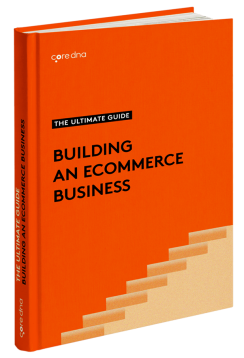
Get Help Growing and Scaling your eCommerce Business
Blueprint on how to start, build, and grow a multi-million dollar eCommerce business.











